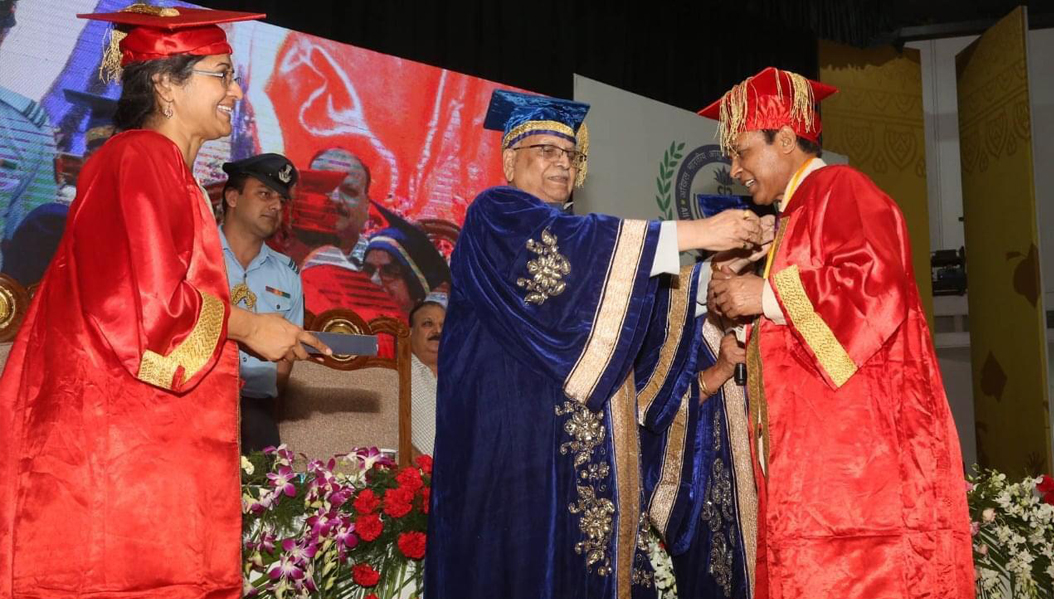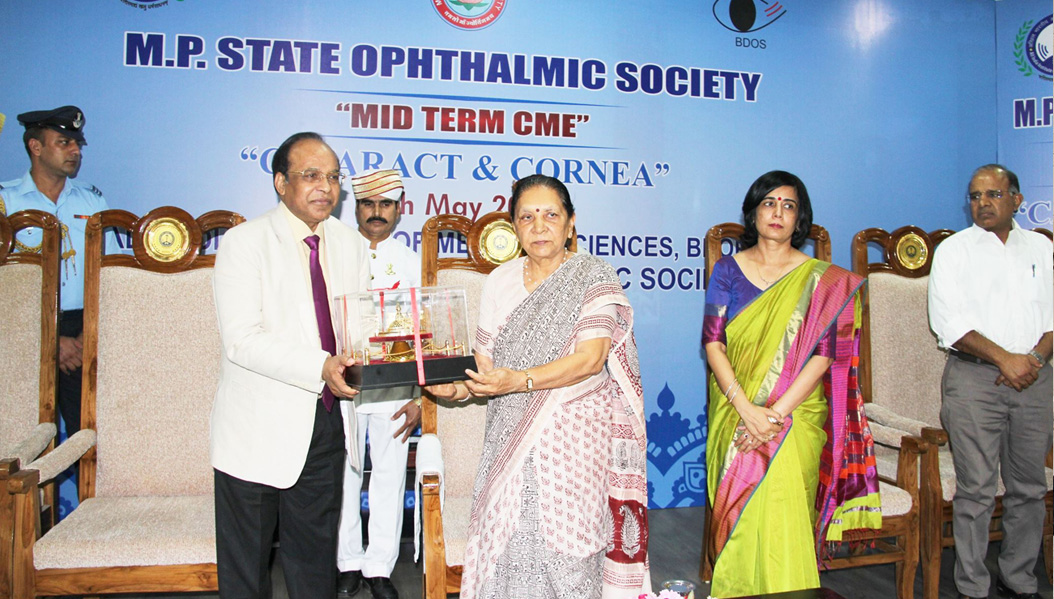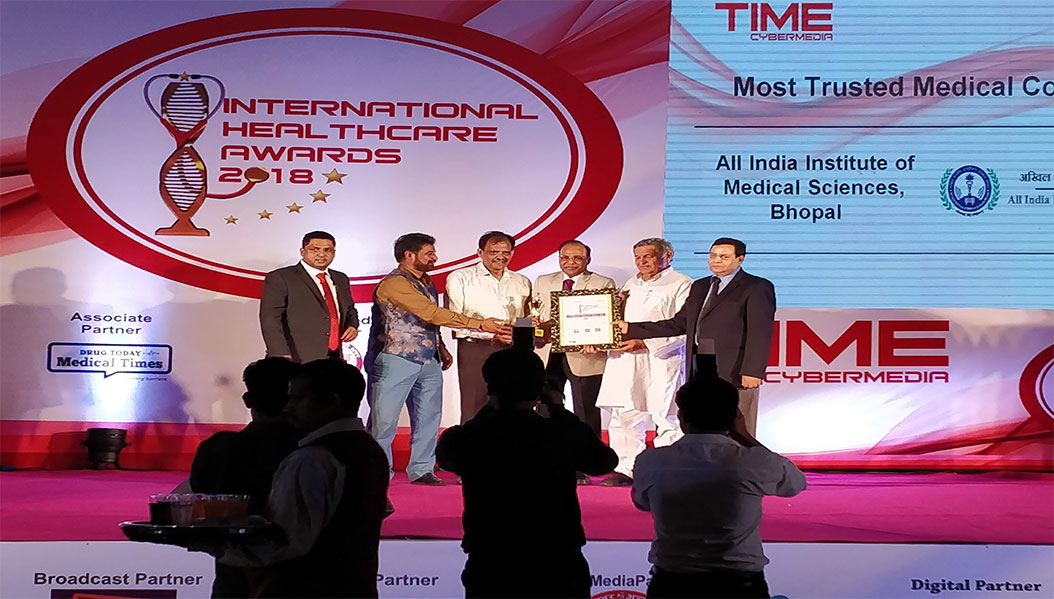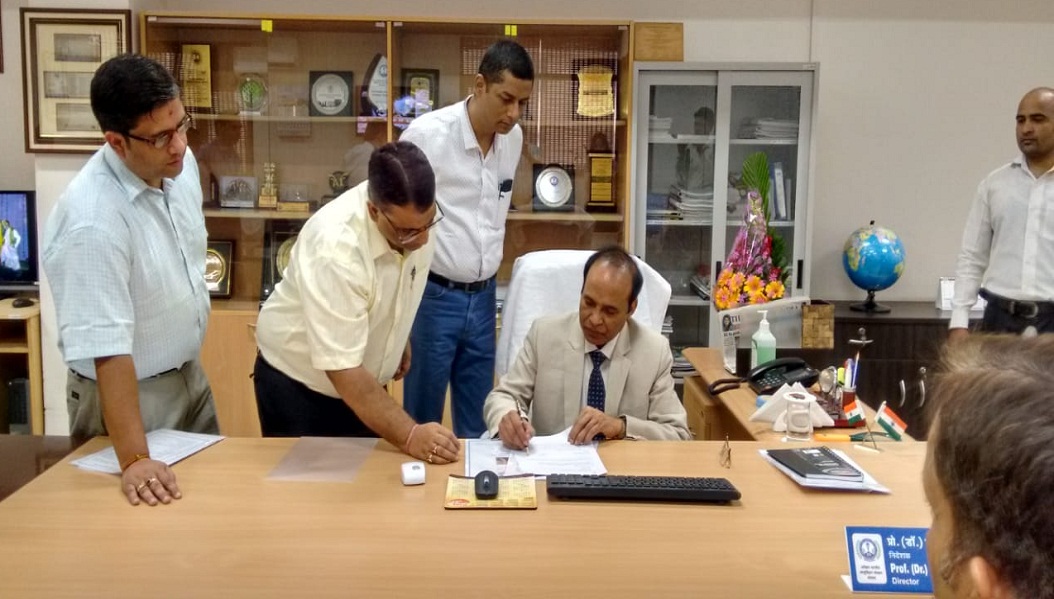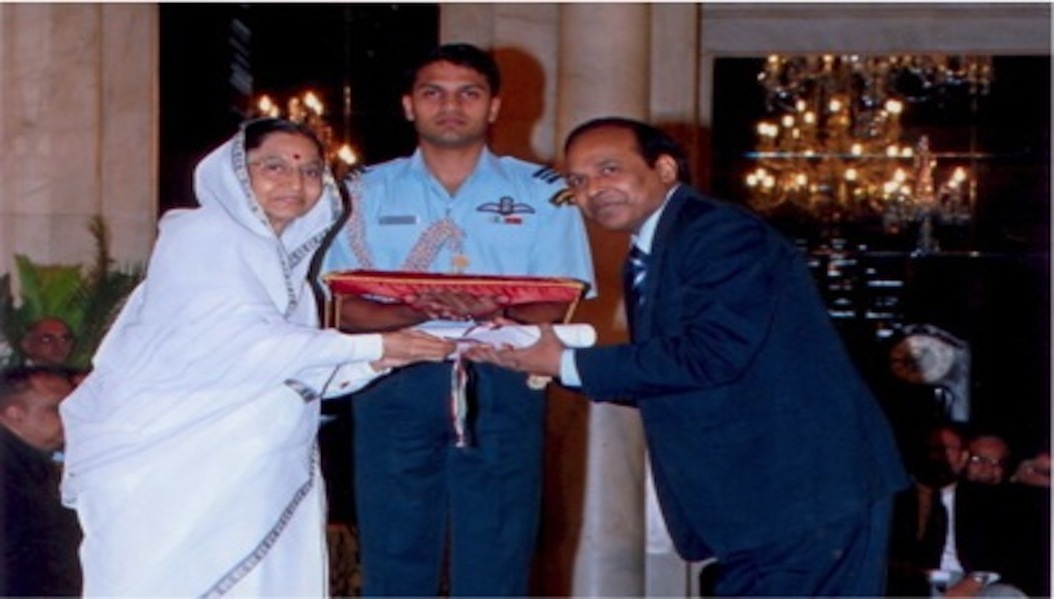Success Mantra: Energy, Hard-work and Consistency
Prof. Sarman Singh is a self-made person, who hails from a very small village of Aligarh, Uttar Pradesh. He always thought of doing some welfare work for the country, which benefits not only his community but all the poor and downtrodden. After obtaining MBBS degree from KGMC, Lucknow and MD from PGIMER, Chandigarh, in 1988, he joined the All India Institute of Medical Sciences, New Delhi. The Department he was assigned, had no research and development work and very few basic diagnostic services at that time.
However, with his hard work, vision and seer perseverance his specialised division has now developed into a full fledged molecular biology centre of excellence which is very well equipped with most of the modern diagnostic and research tools such Whole Genome Sequencer, 6 laser flow cytometer, Molecular Biology work-station, MB-Bact, MGIT-960, Epicenter, various types of research and fluorescence microscopes, PCR, Real-time PCR, Mini-Mag,, NASBA, gel driers and DNA/RNA extractors, CO2 incubator, various types of centrifuges, biosafety cabinets, ELISA processors, electro-chemiluminescence, VIDAS etc.. The division is catering from very routine to most sophisticated molecular diagnostic services not only to the Institute hospital patients but also to patients of other hospitals in and outside Delhi. The laboratory has received several research grants from Department of Biotechnology, Indian Council of Medical Research, Department of Science and Technology, Council for Scientific and Industrial Research, NIH (USA), European Commission, Australia Council, Bill and Melinda Gates Foundation, WHO etc.
After serving the parent AIIMS for more than 30 years, he was appointed as the Director and Chief Executive Officer of All India Institute of Medical Sciences, Bhopal in June 2018. Where he worked for more than 3 years and successfully handled the COVID-19 epidemic and won the prestigious “Pride of India Award” from Public Relation Society of India for his covid management. He started several new PG and post-doctoral courses various branches of medical and nursing fields, facelifted the Institute campus, increased the public perception and institute jumped to second to AIIMS Delhi amongst all sister concerns in the field of Research and innovation. He created a unique Translational Medicine Centre to encourage the innovation, clinical trials and translational research which can go from bench to bed and the society.
After his superannuation from AIIMS Bhopal in November 2021, he joined hands with Dr. Shiva Umapathy, the director of IISER, Bhopal as Mentor of the newly created Medical Sciences and Engineering Research (MEDSER) Centre. Another unique centre by any Institute of National Importance and worked there till February 2024. Currently, he is working as Director Medical Research, Aarupadai Veedu Medical College, a Vinayaka Mission’s Research Foundation (DU) venture at Pondicherry.
Dr. Singh is voracious writer, dedicated researcher, loved teacher by his students, an able administrator and a visionary. This is evident from his high citation index of 6500, i10 index of 141 and h-index of 40. He is an internationally acclaimed medical scientist with outstanding research and academic achievements for his pioneering work in the field of infectious diseases. His work has made high impact on the society both directly and indirectly and saved thousands of lives from diseases and poverty.
His contribution to the society has been in two ways: direct and immediate and indirect but long lasting. The immediate impact has been through his inventions and innovations in the field of two major killer infectious diseases- the kala-azar and tuberculosis. Though both diseases affect poor, but kala-azar mainly affects the poorest and down trodden (Singh et al, 2000). Thousands of poor in Bihar, West Bengal and Uttar Pradesh used to die due to kala-azar because the diagnostic methods were very costly for them to afford. The rapid test developed by his team which is highly cost-effective, the number of deaths due to kala-azar has come down. Though Government of India has taken several steps to tackle this disease, but the rapid test kit developed by him played pivotal role. His new inventions including the early diagnosis of tuberculosis and a mosquito proof cooler are on the way of commercialization which will make a dramatic change in the control of Tuberculosis and mosquito borne diseases. Indirect impact of his work has made a significant effect in youths and students across the country. Thousands of students get highly motivated after reading his biography. These youngsters generate confidence that with hard work, perseverance and honesty and scientists even poor students can also excel and contribute in the national building.
The main focus of Prof. Sarman Singh’s research has been on developing more sensitive and cost-effective diagnostic methods for infectious diseases, particularly those that are difficult to diagnose and treat. Towards this goal, he has made several ground breaking discoveries in the field of pathophysiology of visceral Leishmaniasis or kala-azar. He was the first to develop and patenting a rapid and highly cost-effective diagnostic test for this disease. A novel recombinant antigen (Ld-KE16) was prepared from an Indian strain of L. donovani (Singh & Sivakumar 2003; Sivakumar et al, 2006) ((PCT/IN2003/000400) and the commercial rights of the test were transferred to the M/s Span Diagnostic Pvt Ltd through the Department of Biotechnology, Govt. of India. The company has made rapid diagnostic test (RDT) kits in various test formats, which were dedicated to the nation by the Honourable Minister of Science & technology, Government of India Shri Kapil Sibal on February 6, 2006 in a glittering ceremony at the Press Club of India. These RDTs have made the invasive and hazardous methods like bone marrow and splenic aspiration dispensable at a very affordable price (Singh 2006). It is a matter of pride that the diagnosis of kala-azar can now be made at a cost of less than Rs. 50 per patient in India using these trailblazing “Made in India” kits. These test kits are exceptionally accurate with 100% specificity and 98% sensitivity.
The disease kala-azar mainly affects the poor and down-trodden section of our society (Singh et al, 2000). Till rapid tests were made available, thousands of poor in the states of Bihar, W Bengal and Uttar Pradesh were dying due to this disease because of non-availability of sensitive, cost-effective and point-of-care diagnostic methods. It may be mentioned that with the availability of this revolutionary test, the number of kala-azar deaths has come down significantly – thanks to the Government of India for their active surveillance, and free treatment combined with the RDT kit developed by Dr. Singh that played a pivotal role in the national kala-azar elimination program. This cutting edge technology is also saving of millions of dollars of the Indian Government every year on foreign exchange. This is the first ever-indigenous invention by a medical scientist, which is become an integral part of any national disease elimination programme. This invention received high appreciation and applauds from the WHO (WR-India, as chair of the award selection committee) in the BMJ Research and Innovation excellence award distribution ceremony while announcing the award to Dr. Sarman Singh.
Beside the above, this work has been recognised by the prominent science agencies of India, notably the Department of Biotechnology (Product, process and Commercialisation award); Indian Council of Medical Research (Dr. BK Aikat Award); Medical Council of India (Dr. BC Roy Award); Government of Uttar Pradesh (Vigyan Ratna Award); Indian Medical Association (Med-Achiever Award); Delhi Medical Association (Chikitsa Ratna Award); Indian Society of Parasitology (Dr. BP Pandey Oration Award); Indian Association of Tropical Parasitology (Outstanding Researcher in Parasitology); Indus Foundation (Innovation Excellence Award); Society for Immunology and Immunopathology (Life Time achievement Award) and many more.
The issue of reservoirs of visceral leishmaniasis in India has remained dogmatic. The dictum has been that only post-kala-azar dermal leishmaniasis (PKDL) patients serve as reservoirs and there are no animal reservoirs in India, in contrast to the well-known animal reservoirs world-wide. In a spearheading study Dr. Singh working on the premise that in several areas where there are no PKDL cases (Dey et al, 2007), the outbreaks or sporadic cases of VL do occur (Singh et a, 2011). Furthermore, using novel PCR primers (PCT/IN2004/000395) his team also found that VL and PKDL strains are genetically different and both strains have differences in the anti-leishmanial drug susceptibility pattern (Mishra et al 2011). Therefore, in a radical approach, his team investigated thousands of animals in endemic areas as well as in non-endemic areas and found that goats are very potent animal reservoirs of VL in India (Singh et al 2013). These findings are bound to make drastic deviation in the kala-azar elimination programme of India.
The whole genome sequence (WGS) of several isolates of Leishmania donovani from VL patients has been sequenced, but it is a matter of pride that Dr. Sarman Singh became the first in the world to carry out the WGS of the PKDL strain of Leishmania. The sequence alignment data showed significant differences in the genome of PKDL strain as compared to VL strains (Gupta et al, 2015). The WGS also revealed a revolutionary finding that a major portion of a saprophytic bacterial (Parvibaculum lavamentivorans DS-1) genome gets integrated into the genome of PKDL strain.
India has distinction of having maximum cases of HIV, TB and Leishmaniasis. In an in-depth invited review in International Journal of Infectious Diseases Dr. Singh discusses the current scenario of HIV-leishmania co-infection and factors that contributed to help quell this duo, in contrast to the other co-endemic countries (Singh, 2014). However, the Leishmania and TB both are co-endemic in several parts of eastern India. It is also known that approximately 20% VL patients will have concomitant or subsequent Tuberculosis but there is no effective vaccine for these infections. Considering this as a major research challenge, for the first time his team prepared a self-cleaving chimeric DNA vaccine which can be used against both TB and visceral leishmaniasis (Dey et al, 2008). This cutting edge innovation has been patented globally (PCT/IN2009/000093). The department of Biotechnology who funded and licensed this this work, observed this invention as of high commercial value. The reputed journal Vaccine invited him to publish this innovative research to publish in their special issue (Dey & Singh, 2009) and again another reputed journal (Parasites and Vectors) invited him to write a systemic review on Leishmania vaccines (Srivastava et al 2015).
Miltefosine is a new drug approved for the treatment of VL in 2004 only but within few years of its introduction, the efficacy has gone down. To understand the mechanism of resistance, in an avant-garde study his team has discovered novel mutations in the genes of Leishmania; which impart resistance to miltefosine. These mutations can now be used as molecular markers to diagnose and predict miltefosine resistance in circulating strains at an initial stage (Srivastava et al, 2016).
Tuberculosis is the main killer infectious diseases in India. On the top of that multi-drug resistant (MDR) and extensively drug resistant (XDR) forms have emerged forcing WHO to announce MDR-TB as health emergency. Dr. Singh for the first time reported high incidence of XDR-TB in Indian AIDS patients (Singh et al 2007). Though this publication created lot of discussion in Government, but finally it was accepted as realty and based on these findings Government of India implemented programmatic management of DR-TB (PMTD). Unfortunately early and accurate diagnosis of TB has remained a major challenge for researchers and programme managers. In last 20 years several serological test kits were dumped in the Indian market for the diagnosis of PTB and EPTB. But these kits gave highly inaccurate results, leading to unnecessary treatment to hundreds of thousands of patients, and leaving several thousands of TB patients untreated. Dr. Singh played crucial role in getting these serological kits banned for import, manufacture and use in India (The Independent, UK; Times of India; The Hindu; Deccan Herald; Spectrum; etc.) and live discussion on the all India Radio. The Editorial published in the IJMR (Singh & Katoch, 2011) played the key role in this decision taken by the Government of India in May 2012.
His laboratory has recently made a revolutionary discovery in this field. After screening hundreds of proteins of MTB, his team identified 5 novel proteins/antigens which are over-expressed only during the in-vivo drug resistance development. The genes were cloned and proteins expressed, purified and used on various categories of patients showing the sensitivity and specificity of these proteins between 98.2% -100% and 89.1 – 98.2%, respectively (Singh et al, 2015, Singh et al, 2016*). Using these novel proteins development of a point-of-care (POC) rapid test is underway. This innovation will be a game changer in the area of TB diagnostics not only for India but globally. The Foundation for Newer Innovative Diagnostics (FIND) has shown interest in this innovation and very soon this innovation will make India proud of innovative research.
Dr. Singh has also done pioneering work in the field of non-tuberculous mycobacteria (NTM) often neglected by clinicians and medical microbiologists as contaminants. In AIDS era these NTM have gained much importance but the conventional methods of identification are neither reproducible nor very specific. His team has developed novel sets of multiplex-PCR primers for the diagnosis and differentiation of Mycobacterium tuberculosis, M. avium, M. kansasii and other NTM, directly from the clinical samples in a single tube (PCT/IN2004/000396). These PCR primers and the process have been found highly sensitive and specific and are being routinely used at AIIMS and many other laboratory settings throughout the country (Singh et al, 2006, Gopinath et al, 2009, Kumar et al 2014a). The PLoS Neglected Tropical Disease published Dr. Singh’s “Personal Opinion: on this subject, which is highly cited. This has made a paradigm shift in the understanding of NTM disease in India. Using the same gene targets, a new technology known as loop mediated isothermal amplification (LAMP) assay has also been developed by him with a commercial partner (Kumar et al, 2014b). The technology is being evaluated across the country and soon may be taken up by the Government of India.
Prof. Singh is the sole authority in the field of Toxoplasmosis in India for both medical and veterinary fraternity. His Toxoplasma reference laboratory is the only centre in entire India which is maintaining and distributing the Toxoplasma gondii strains to other researchers for the last 26 years continuously. Because of his spearheading teachings through webinars, print media and on other platforms including the FOGSI, ISP, IATP, IAMM, etc he has been able to convince the majority of Gynaecologists, Obstetricians, Paediatricians and Medical /veterinary microbiologists of India, that bad obstetric history (BOH) is a misnomer and that Toxoplasma causes multiple abortions is only a myth (Singh 2003; Singh & Pandit 2004; Singh et al, 2014). He is now the last word for Gynaecologists and Obstetricians of India regarding the diagnosis and management of congenital/antenatal toxoplasmosis. He has saved several unwarranted terminations of precious pregnancies suspected to have intrauterine toxoplasmosis on the basis of inaccurate test methods. His work has been cited in several reputed reference and text books-notably, the Infectious Diseases of fetus and neonates (Remington & Klein), Practical Obstetric Problem (Ian Donald); Toxoplasmosis : A comprehensive Clinical Guide (David et al), International Encylopedia of Public Health (Academic Press); Practical Guide to high-risk Pregnancy and delivery (Arias); Internal Medicine: an Illustrated Radiological Guide (Tubaikh) to name a few. It is worth mentioning that for his work on Toxoplasmosis he has been honoured by the Indian Academy of Tropical Parasitology as well as by the Indian Society of Parasitology. Beside TORCH infections his original work on mother-to-child transmission of Hepatitis E virus has been cited in almost all text books of paediatrics and Obstetrics, for examples – Principles and Practice of Infectious Diseases (Bennett et al); Infectious Diseases of fetus and neonates (Remington & Klein); Practical Obstetric Problem (Ian Donald); Viral Infections of Humans (Kaslow et al) and Avery’s Neonatology.
He was the first to document first case of HIV-Leishmania co-infection in India (Singh et al 2000a) and also high incidence rates of hepatitis B and Hepatitis C virus infections in Kala-azar patients of Bihar who were receiving multiple injections of sodium antimony gluconate (Singh et al, 2000b). He for the first time documented that circumcised patients had lower incidence of Hepatitis C and HIV virus infections in India. These findings were noticed by WHO and its Safe Injection Global Network (SIGN) division organised a special meeting with Government of India (in 2001) and highlighted the need for safe injection practices in India. Dr. Singh was special invitee in this meeting to present his findings. This advisory issued by the WHO to India based on his findings changed the scenario of injection practices in India.
Dr. Singh has several firsts to his credit, whether it pertains to new discoveries, novel innovations, finding new pathogens, clinical conditions or disease manifestations. His keen interest in new discoveries and scientific dissemination started from his early residency days at PGIMER, Chandigarh. Dr. Singh was the first to report fungal contamination (Trichosporon beigelli) of UGI endoscopes instead of routine decontamination procedures (Singh et al 1989). This work has been cited in almost all text books of Gastroenterology. He also reported new species of Trichuris (vulpis) in Onges tribes of Nicobar (Singh et al 1993) and new genotypes of Mycobacterium tuberculosis in India.
In addition to research, teaching and patient care he is helping various Government organizations like UPSC, DBT, ICMR, ICAR in the academic and administrative processes, and on being on their task forces. Dr. Singh has been member and Chairperson of Peer Team of NAAC and Inspector of the MCI. Dr. Singh has also been on the research advisory committees/examiner of more than 25 central and state universities. He is also member of scientific advisory committees of JIMPER, Pondicherry; RMRC, Jodhpur and National JALMA Institute for Tuberculosis. He is grant reviewer for DST, DBT, DHR, ICMR, CSIR, BIRAC/IKP, BCIL of India. His research is also recognised outside India and he is grant reviewer for Medical Research Council, Government of South Africa; Ministry of Science and Technology, Life Sciences Division. Government of Israel and Ministry of Health (General Director for Scientific Research and Health Innovation), Italy. He is also abstract reviewer for World AIDS conference (IAS, Geneva) consecutively for 9th year
He is one of the upper 10% peer reviewers for the publications from topmost publishers like Elsevier (including Lancet), NPG, Bentham, Springer, ASM, JAMA, BMA and others. Overall he is manuscript reviewer for more than 10041 reputed journals The students supervised by him as Guide, are pursuing their career successfully. Of the 32 PhDs all have received accolades in the form of best poster or best oral presentations in various national and international conferences and most of them have received travel awards from DST, DBT, ICMR, BMGF or from conference organisers. One student was selected by HIV trust fund (Geneva) to work at NIH for 6 months.
He has supervised 32 PhDs, 40 MD/MS/DM and >40 MSc. Students. His outstanding publication record includes 6 books, 46 book chapters and 365 research papers in various peer reviewed journals, including the Lancet, Lancet Global Health, Lancet Infectious Diseases, Cell, PNAS, BMJ, to name a few. With a total citation of more than 14700, i10 index of 227 and H-index of 64, he is listed in the world’s top 2% Microbiologists by the Stanford University for the last 4 consecutive years.
He is Editor-in-chief of Journal of Laboratory Physicians (JLP), Academic Editor of Medicine, PLoS-One, PLoS-NTD and Tuberculosis Research and Treatment, besides being on the editorial boards of more than 40 national and international journals.
***



